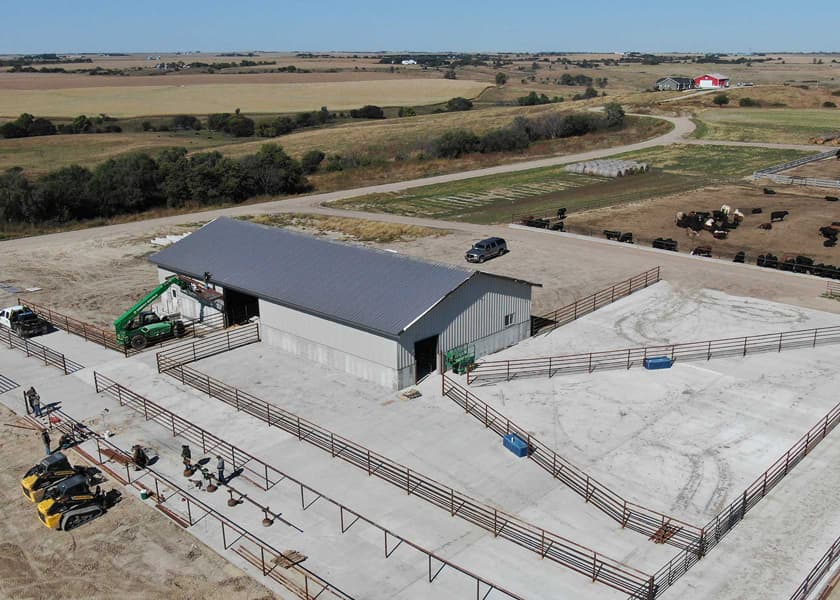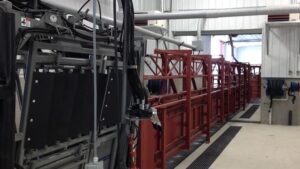
From the guiding system and the chute to staging pens and loading or unloading, these four components must all function well for a handling facility to be successful. No two facilities are the same. That is why livestock system engineering and designer Settje Agri-Services employs the knowledge and skills of industry experts to deliver custom solutions that fit unique situations. One such expert is Dr. Kip L. Lukasiewicz, a partner with Production Animal Consultation. Lukasiewicz trained with well-known and respected livestock handler Bud Williams whose low-stress stock handing method has contributed to increased productivity and better safety and security for the stock and the handler.
 The Chute
The Chute
The goal for stockmen is to be able to work as efficiently as possible while completing their daily cattle management tasks. “If you’re having trouble getting cattle to come into your chute, you may need to make adjustments to the bottom of the chute if it’s pinched in too tight where cattle enter,” says Lukasiewicz. “Cattle like to have a wide base when they move. So, if you have the bottom pinched in too tight, that might prevent them from coming forward.” In his work with moving animals into a chute, Lukasiewicz has made other important observations. “Cattle have really poor depth perception, and so their ability to judge depth takes some time. That poses a problem when the animal has to step up to enter,” he noted. “Chutes that are basically recessed, or it appears as a straight floor coming from the alley into the chute, tend to work really well.”
The Guiding System
Before the animals even get to the chute, they must travel through the guiding portion of the system. One question many cattlemen have is whether to have open or closed sides along the system. “Cattle are prey animals, and so they do love to see what’s pressuring them,” says Lukasiewicz. He goes on to explain that the only reason cattle would ever jump up is to see out. “Providing them sight is important, as long as you’re providing them a sight where you want their focus to be.”
Since not all ranches handle the same size animal at the same time, there needs to be flexibility when it comes to the guiding system or alleyway. “I used to tell people, if your alleyway can hold eight, then bring eight. I started thinking about how many pounds can my alleyway hold. And if that alleyway can hold 5,000 lb., well, then that means I can bring ten 500 lb. calves, or three 1400 lb. cows,” describes Lukasiewicz. “Bottom line, if you have questions, know there are experts out there willing to provide experienced guidance.”
Staging Pens
When determining the optimum number of animals to load in the staging area, a North Dakota State University research article recommends filling the entire alleyway to the point where the herdsman closes the solid gate behind the cattle and the cattle move toward the dead-end portion of the pen. Lukasiewicz advises 25 sq. ft. for holding pens per animal, and then about 55 sq. ft. for comfort if longer durations of stay are required.
Loading and Unloading
Successful loading and unloading have a lot to do with the comfort and stress level of the animals. “They need access to feed, water and shade, if possible,” says Lukasiewicz. “And if you’re going to unload calves overnight, let them sit for a day or two to acclimate before you process them.” Not all facilities are set up for optimal loading conditions, but these are important aspects to consider when building new facilities or upgrading existing structures.
The professionals here at Settje understand no two operations are identical, so the working facilities should not be identical either. That’s why we specialize in customized solutions that fit your specific constraints and goals.
If you’re considering building a handling facility for your operation or would like more information about our design process, contact your local Settje consultant. If you don’t have a Settje consultant, you can contact us directly.
